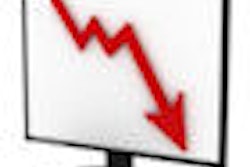
In part 2 of this series, we examine the outlook for capital equipment purchasing in 2009 and discuss how soon the medical imaging market will be able to dig out of its current economic doldrums.
Depending on the global breadth of product line and market penetration, vendors generally are mixed about sales outlooks for 2009.
Irwin Baker, president at RPM Healthcare Strategies of Glen Head, NY, points to a "clear and consistent pattern of slumping sales for the year, based on 2009 forecasts he's seen from major suppliers. But he also noted that any products tied into clinical and financial strategies and objectives, particularly on the acute care side, should fare better.
Consequently, he predicts that custom contracting by hospitals, integrated delivery networks (IDNs), and group purchasing organizations (GPOs) will be sought. "As the dollars dwindle, reliance on GPO and IDN contracting will grow to assure the providers have their costs fixed as far out as possible," he added.
For Carestream Health of Rochester, NY, being a global supplier helps the company's fiscal forecast. "We have no plans to decrease our continuing investment in new product development," according to Joe Maune, worldwide and regional business manager at the company.
"Our experience around the world indicates that most healthcare providers have a long-term perspective -- they are looking for systems and solutions that lower cost and improve care through the implementation of innovative technology," he said. "Economic conditions differ across the globe, and as a worldwide supplier doing business in more than 150 countries, we have greater stability than regional or national suppliers."
Joe Robinson, senior vice president of imaging systems, North America, for Philips Healthcare of Andover, MA, projects that the "market for imaging equipment will dip in 2009" and price pressure over the next 12 to 18 months will be prolonged. "Much of that pressure will be reflected in systems being purchased with fewer features, as customers tighten their belts," he noted. But Philips Healthcare also will continue to invest heavily in R&D, he added.
Thorny expectations in one area, however, may translate into rosy opportunities in others, according to John Vano, president of Radiology Oncology Systems of San Diego, and John Sandstrom, Ph.D., senior vice president of healthcare at Siemens Financial Services.
"We expect that a decline in demand will be followed by a decline in R&D spending by the major manufacturers, and this will ultimately slow the rate of technological advancement in healthcare technologies," Vano said. "The good news is that equipment still needs to be serviced, and service companies can expect stable or even growing revenues."
"In the used equipment segment, we expect pricing to remain stable," he continued. "Weaker demand will be met by lower supplies of available equipment, as facilities will hold off on replacing their machines with new ones. In the new products segment, we expect fierce competition and a downward pressure on pricing, as manufacturers strive to reduce inventories and brace for weaker demand."
Sandstrom predicts new imaging system sales will be "negatively impacted in 2009," but that growth in 2010 will depend on stabilization of the financial markets, economic improvement overall, and the Obama administration's healthcare policy plans and actions.
"However, as projects are delayed, pent-up demand will build," Sandstrom said. "This should drive a strong rebound as the overall economy recovers. Regarding pricing, it is hard to say exactly what effects will be seen as this is predicated on demand, the need for clinical improvements that each of the new products bring, and important for Siemens is our focus on the upgradeability of systems, which supports their long-term value. Pricing effects will tend to differ based on the product and product lines."
"Long term, everyone believes the economy and financial markets will improve," he continued. "This is a temporary, not permanent situation. As such, investments by manufacturers in R&D should -- and we expect, will -- continue. New products continue to enter the market."
Healthcare reform
Regardless of financial market stability and economic confidence, the proverbial X factor remains the Obama administration's healthcare reform policies, as sources indicate any major policy changes could make or break an ailing system.
"Any major U.S. healthcare reform plan will have many complexities, and it will require a lot of work and collaboration on the part of many interested parties and organizations," Maune said. "I believe its impact is likely to be felt over a period of time and not all at once."
Vano questions the effects of increased government spending in healthcare. "On the one hand, more spending may equate to higher reimbursement rates, which will drive greater demand for capital goods," he said. "But on the other hand, more government intervention in healthcare may result in greater inefficiency, more bureaucracy, increased costs, delays in providing service, and poorer quality of care."
The real issue is not increased spending, but following where that money will go and how it will be spent by hospitals state-by-state, according to Robinson. "Regarding healthcare reform, until healthcare leadership, economists, payors, etc., understand what healthcare reform will look like, they will be cautious about how and where they invest within their systems," he said.
Sandstrom stressed that President Barack Obama's healthcare reform policies will affect capital availability, reimbursement dollars, and technology development and acquisition in a variety of ways.
For example, if healthcare reform succeeds in providing healthcare insurance for all Americans, Sandstrom said, "this should remove a significant cost for all healthcare providers, improve their financial performance, and make them prospectively better risks," as well as "increase their access to capital and improve their cost of accessing capital."
Yet as the Obama administration pushes to reduce healthcare costs, reimbursement rates likely will feel downward pressure, particularly in the area of Medicaid rates, as states face severe budget shortfalls, according to Sandstrom. As a result, healthcare providers will be forced to find more efficient ways to deliver their services to achieve some balance between increased coverage and reduced reimbursement.
"If the balance results in significantly reduced revenue, this will further shock the system, delaying or reducing the ability of hospitals to provide the new technologies -- and care improvement the technologies bring," Sandstrom said.
But at the same time "there will be a clear drive to streamline the administrative aspects of delivering healthcare in the U.S.," Sandstrom emphasized, and that represents a "significant cost component."
While companies developing and marketing healthcare-related information technology systems designed to automate patient billing and other information will be key benefactors, President Obama's economic stimulus package for healthcare offers providers incentives to invest in IT technology, he noted.
By Rick Dana Barlow
AuntMinnie.com contributing writer
March 24, 2009
Related Reading
Imaging and the economic crisis: Part 1 -- Sudden impact, March 19, 2009
Report: Hospitals hit by capital crunch, February 2, 2009
Survey forecasts drop in capital purchasing, December 18, 2008
Copyright © 2009 AuntMinnie.com



















